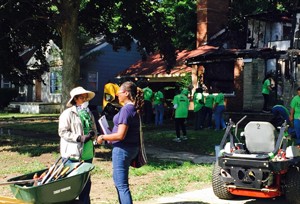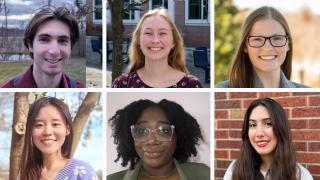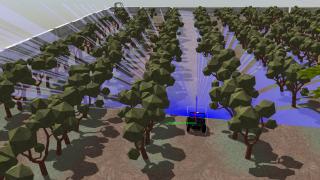

When Karen Thomas-Brown was a child, she remembers the moment that someone believed in her.
“A woman at church said, ‘This girl is smart.’ I was in third grade,” said Thomas-Brown, who grew up in an impoverished neighborhood in Jamaica. “Someone took note that I was more than a poor, hungry, suffering kid. She said I was smart. Because she believed, I believed. That made all the difference in my life.”
The effects of “reaching out” are what the social studies associate professor and urban geographer is looking to document through a recent research project. She’s collaborating with LaShorage Shaffer, assistant professor of child education, and Dara Hill, associate professor of reading and language arts.
This summer, the faculty spent time with residents of Detroit’s Osborne neighborhood. They created and taught a Writers Club for youth at the Matrix Human Services Center and took part in the non-profit organization Life Remodeled’s community project, which focuses on a Detroit neighborhood each summer to renovate a school, restore select homes, and remove blight and overgrowth.
The educators worked with the teens on expressing their hopes and dreams for themselves and their neighborhood at the weekly Writers Club.
“At the Writers Club, we said you can sit there and watch, or you could be a part of the change that’s going to happen. It doesn’t end here. It was important for them to think about sustainability,” Hill said. “For the youth who participated, they shared how it was empowering to see brush cleared away or have nice green space in an area that once had grass taller than they are.”
And they saw the transformation—in spirit and in aesthetics—of the eastside Detroit community. This year 12,000 volunteers helped the Life Remodeled project renovate Osborne High School and 23 residential homes. Several of the students in the Writers Club were volunteers.
Thomas-Brown wanted to join the neighborhood effort to document an urban revitalization project to see the effects that a large-scale cleanup effort has on community identity.
“Yes, we wanted to do research, but we also wanted to demonstrate that this is more than collecting data. It’s telling stories. It’s working in the community,” she said, explaining why they created the Writers Club at the Matrix Center. “It’s sharing the process and results of a neighborhood’s transformation.”
The faculty members met with homeowners who couldn’t make repairs for many reasons: Damages from the 2014 flood they couldn’t afford to fix, losing a working spouse, illness, job loss and more.
Shaffer said the people were doing everything they could to protect their homes, like paying taxes and being current on mortgages, but were still living in unacceptable conditions.
“One woman had an absolutely immaculate house. At first we wondered what changes could be made, but then we found out that she heated her home with her oven because her furnace gave out,” she said. “When she saw the volunteers, she cried because it meant someone cared enough to help her and her community.”
And the feeling that someone cares is what may make the difference.
“One of our goals is to show what happens when there are people who look past stereotypes and believe in a community, believe in the residents and show it. We’ll look at the short- and long-term effects that a project like this has on a neighborhood,” Thomas-Brown said. “Belief can be a powerful thing. It’s what changed my life.”





